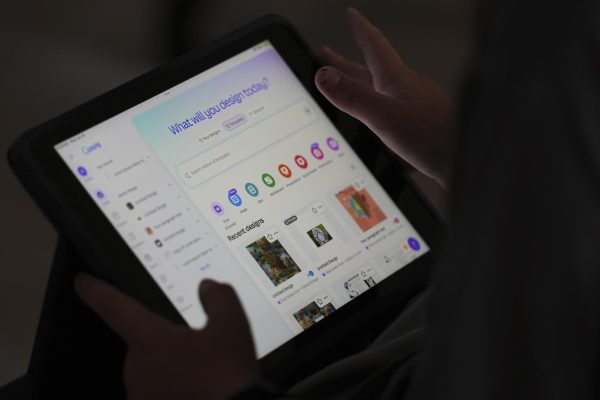From bullets to books: How to budget while using the G.I. Bill
If you’re a student like me, I’m sure you’ve noticed that the G.I. Bill’s Monthly Housing Allowance doesn’t necessarily pay the bills in Houston. You need to be a full-time student (12 credits) to get the full monthly $1671, (Veterans Affairs) but being a full-time student doesn’t always give you the time to pick up a part-time job on your off days. If you’re a busy student with no time for a side job, you’re stuck making that $1671 stretch until the next month. This is especially true if you’re pursuing a degree in the fast-paced STEM fields. With all this being said, let’s get into the money saving hacks.
First off, let’s talk about housing because this is going to eat up most of your precious coin. According to Apartment List’s Rent Report, the median cost of a one-bedroom apartment in the Space City is $1,012. Your best bet to save money on housing is to live with roommates. Living with a roommate or two will usually drop your housing cost by half or even by a third if you’re lucky. The reason why is because the price increase of a one-bedroom, to a two-bedroom, to a three-bedroom isn’t always dramatically different. The average two-bedroom costs $1,204 in Houston. (Apartment List) If you paid the average price for a one-bedroom, your base rent would be $1,012 paid by you alone. If you shared a two-bedroom with a roommate at the average cost, your base rent would be $602 since you’re splitting costs with your roommate. See what I’m saying? We can take this one step further to save even more money. Thanks to the internet, finding cheap housing is easier than ever. You can utilize platforms like Facebook Marketplace, PadSplit, and Craigslist to find even cheaper options. On these sites, you can find people offering low rates to rent out vacant rooms in their homes. These offers almost always include utilities in the cost as well. I’ve seen some people offer rooms for as low as $400-$500, all with utilities included! That’s a steal if you’re willing to go that route!
Your next largest bill is probably a car payment. In my opinion, I say ditch that financing as soon as possible. According to LendingTree, the average cost of a car note in 2022 for new vehicles is $644, $531 for leased vehicles, and $488 for used vehicles. That is absolutely insane! It’s unfortunate that Houston is a car-dependent city, but there’s ways around this. One option is to try to live within the 610 Loop so that you can utilize public transportation to some degree. Even though it’s not as efficient as cities like Boston, Seattle, and NYC, you can get around okay if you plan properly and live more central away from the suburban sprawls. Another option is to buy a used car paid in full with cash. This can be a risky move if you’re not knowledgeable about cars, so having a knowledgeable friend or relative is helpful to avoid scams. You can usually find a decent car for around $3000-$6000 on Craigslist, Facebook Marketplace, or just plain word of mouth. Remember, you may not be in the sexiest ride, but the goal is to get from Point A to Point B efficiently and safely.
The next expense that can be adjusted for a tight budget is food. I’m probably going to step on some toes, but if you’re a single person with no other mouths to feed, there’s no reason for you to be spending $200 or more on groceries. I would go as far as to say that even $150 is pushing it. If you’re wondering how this is possible, I have two words for you. Meal. Prepping. This is an absolute lifesaver for your wallet, and your waistline. I’ll tell you my secrets to spend less than $100 a month on groceries. First off, stop buying name brands. This can easily cut your grocery costs in half. Great Value by Walmart tastes just like the big brands for a much cheaper cost, so stick to something like that. The next thing to do is consider your nutritional needs. Everyone needs protein, carbohydrates, fat, and natural sugars. Not to be confused with added sugars which are terrible for you. Natural sugars are commonly found in fruits. What I do is make power bowls. I use pinto or kidney beans for my protein, enriched white rice for my carb source, and vegetables for my vitamin and fiber source. I’ll also throw in some shredded cheese for my dairy and fat source as well. As you can see, a simple power bowl like this can allow you to easily hit your nutritional needs for the day if you eat a few of these meals. This is a low-calorie meal as well, so this will save your waistline while you’re at it. If you’re wondering how much this costs, it’s dirt cheap. I usually spend about $3 on 5 cans beans for the week, $4 for a box of instant rice that lasts almost two weeks, and about $2 for a 2-pound bag of veggies for the week. This amount will yield 10 meals when prepped properly. Depending on your appetite, you can eat two or three of these meals a day before you have to meal prep again. Add in a bag of fruit for a few bucks and now you have a snack to eat between meals. Obviously you can have some flexibility with this diet as well. You can always switch up the cheese type, veggies, fruits, sauces, and bean type so that you don’t get bored quickly.
Healthcare can be a huge expense as well. Since you’re a veteran, you qualify for VA Health Care. Keep in mind that you don’t need a service-connected disability to qualify. This is available for all veterans. VA Health Care separates veterans into separate “Priority Groups” based on income and any service-connected disabilities. What this means is that if you’re a high earner with no disability, you’ll be in a lower Priority Group with higher copays. If you’re a low earner or have a disability, you’ll be in a higher Priority Group and pay a very small copay or none at all. Even if you’re a high earner and have to make a copayment, they are significantly lower than the private health insurance counterpart. Another thing to keep in mind is that for VA Health Care, there is no monthly premiums. This is an absolute lifesaver that you should need to take advantage of. For example, since I’m a broke college student and veteran, I paid a whopping $0 for x-rays at the VA Hospital a few months ago with no monthly premium on top of that. Do not sleep on this benefit.
With these bigger expenses out of the way, the rest is up to your discretion. You can shop around for different car insurance rates, and since you’re a veteran, USAA will usually give you cheaper rates than the other big names. (Shinn) Another expense to consider is your phone bill. I would say to avoid financing a $1000 phone, but if you want the best of the best, at least jump on a military plan that many carriers offer. I currently pay $55 for unlimited talk, text, and LTE under T-Mobile’s Magenta Military Plan. You’ll also need Wi-Fi unless you want to live like a caveman. If you live with roommates, this cost will be split amongst y’all. You can find plans with good speeds for around $40-$60. Gas is another expense you will probably have, but there’s not much room for saving in that regard unless you’re at home majority of the time. All gas prices are pretty similar so there’s not really any real money saving hacks or alternatives. Especially with the Ukraine-Russia conflict inflating gas prices. All of this just about covers the necessities. If there’s one thing I can leave you with, always try to live below your means. The U.S. consumerist culture can destroy you if you let it, so it’s up to you to avoid this at all costs. If you follow these tips, you can easily have hundreds of dollars leftover after all of your necessities are paid for.
References
Apartment List. “100 Best Apartments In Houston, TX (with Pictures)!” Apartment List, www.apartmentlist.com/tx/houston#rent-report. Accessed 10 Mar. 2022.
Martinez-White, Xiomara. “Average Car Payment | Loan Statistics 2022.” LendingTree, www.lendingtree.com/auto/debt-statistics. Accessed 10 Mar. 2022.
Shinn, Lora. “USAA Car Insurance vs. Geico Car Insurance: Which Is Better in 2022?” U.S. News, 2 Mar. 2022, www.usnews.com/insurance/auto/usaa-vs-geico.
Veterans Affairs. “GI Bill Comparison Tool.” Veterans Affairs, www.va.gov/education/gi-bill-comparison-tool/?search=name&name=HOUSTON%20COMMUNITY%20COLLEGE&excludedSchoolTypes%5B%5D=PUBLIC&excludedSchoolTypes%5B%5D=FOR%20PROFIT&excludedSchoolTypes%5B%5D=PRIVATE&excludedSchoolTypes%5B%5D=FOREIGN&excludedSchoolTypes%5B%5D=FLIGHT&excludedSchoolTypes%5B%5D=CORRESPONDENCE. Accessed 10 Mar. 2022.



































